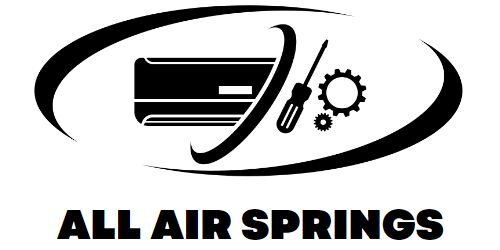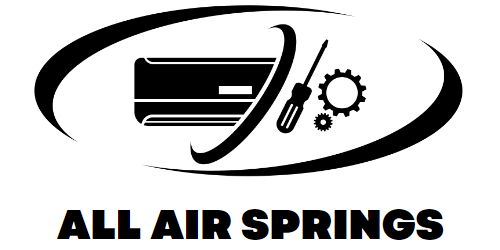
Everything You Need to Know About Brake Chambers: Types, Maintenance, and Safety
Introduction to Brake Chambers
Brake chambers are essential components in the air brake system of heavy-duty vehicles, such as trucks and trailers. They play a crucial role in ensuring that the vehicle’s braking system works effectively, allowing drivers to maintain control and prevent accidents. Understanding brake chambers is vital for anyone involved in the maintenance or operation of commercial vehicles, as their proper functioning directly impacts vehicle safety.
The primary function of a brake chamber is to convert air pressure into mechanical force, which then activates the brake mechanism. When air pressure is applied to the brake chamber, it causes the diaphragm inside to move, pushing the pushrod and engaging the brakes. This action slows down or stops the vehicle.
In this section, we will dive into the basics of brake chambers, exploring their role in the braking system and why they are critical for the safety of commercial vehicles. Whether you’re a truck driver, fleet manager, or mechanic, understanding brake chambers is essential for keeping your vehicle’s braking system in top condition.
What Are Brake Chambers?
A brake chamber is a crucial component of an air brake system found in commercial vehicles such as trucks, buses, and trailers. Essentially, it is a mechanical device that converts compressed air into mechanical force, which is used to apply the vehicle’s brakes. This allows for a safe and effective braking system that helps slow down or stop the vehicle when necessary.
Brake chambers are composed of several key parts, including a diaphragm, a spring, a pushrod, and a housing. The diaphragm is a flexible rubber component that moves when air pressure is applied. It pushes the pushrod, which in turn engages the brake shoes or pads, creating friction to slow down the vehicle. The spring within the brake chamber serves as a backup mechanism, ensuring that the brakes are applied in the event of air pressure failure.
In air brake systems, brake chambers come in various sizes and configurations to suit different types of vehicles and braking requirements. Their design and functionality are critical to the overall performance and safety of the vehicle, making them an essential part of any fleet or commercial transportation operation.
Types of Brake Chambers
Brake chambers come in several types, each designed for specific braking needs and vehicle requirements. Understanding the different types of brake chambers is essential for proper maintenance and selection of the correct part for replacement. Below are the most common types:
Service Brake Chambers
These are the standard brake chambers used in most air brake systems. They are activated when air pressure is applied, causing the diaphragm to move and engage the brakes. Service brake chambers are typically found on the front axles and are designed for everyday braking needs.
Spring Brake Chambers
Spring brake chambers are equipped with a powerful spring that is used as a backup in case of air pressure failure. When air pressure is removed, the spring automatically applies the brakes. These chambers are most commonly found on the rear axles of vehicles, ensuring that the vehicle remains stopped even during a loss of air pressure. They are critical for parking brakes and emergency braking systems.
Long Stroke Brake Chambers
Long stroke brake chambers are designed for vehicles that require additional braking force. The long stroke increases the movement of the diaphragm, providing more braking power. These are typically used on vehicles with heavier loads or larger brakes.
Treadle Brake Chambers
These are specialized brake chambers used in vehicles that have a treadle or foot pedal system for brake operation. They combine air brake functionality with mechanical activation to allow for precise brake control.
Each type of brake chamber has its unique applications depending on the vehicle and its braking system requirements, making it crucial to choose the right one for safety and efficiency.
How Brake Chambers Work
Brake chambers play a vital role in the operation of an air brake system, converting air pressure into mechanical force to engage the vehicle’s brakes. The working mechanism of a brake chamber is straightforward but crucial for the safe operation of large vehicles.
When the driver presses the brake pedal, compressed air is sent through the air brake lines to the brake chamber. Inside the chamber, the air pressure is directed onto a flexible diaphragm. This diaphragm moves as a result of the pressure, pushing the pushrod forward. The pushrod, in turn, activates the braking mechanism by applying force to the brake shoes or pads, creating friction and slowing the vehicle.
In service brake chambers, the air pressure is continuously applied while the brakes are engaged. The diaphragm’s movement is controlled and reversed as long as air pressure remains present. For spring brake chambers, in the event of air loss, a powerful spring within the chamber takes over, applying the brakes to prevent the vehicle from rolling or causing an accident.
This process of converting air pressure into mechanical braking force ensures that large vehicles can stop quickly and safely. Brake chambers are essential in ensuring efficient and reliable braking, making their proper function critical to vehicle safety.
Common Brake Chamber Issues
Brake chambers, like any mechanical component, can experience wear and tear over time, leading to various issues that affect their performance. Understanding the common problems associated with brake chambers can help identify potential issues early, ensuring timely repairs and preventing accidents.
Air Leakage
One of the most common issues with brake chambers is air leakage. Over time, seals and gaskets can deteriorate, leading to air leaks. This reduces the efficiency of the brake system, as the air pressure needed to engage the brakes may not be sufficient. Drivers may notice a loss of braking power or longer stopping distances if air leakage occurs.
Diaphragm Wear or Damage
The diaphragm inside the brake chamber is a key component that can wear out over time. It is made from flexible rubber, and constant movement can cause cracks, tears, or thinning. A damaged diaphragm can cause the brake chamber to malfunction, leading to a loss of braking performance or uneven brake application.
Corrosion and Rust
Brake chambers are exposed to various environmental factors, such as moisture and road salts, which can cause rust and corrosion over time. Corroded brake chambers may fail to function correctly, resulting in poor brake response or even complete failure in severe cases.
Spring Failure
In spring brake chambers, the internal spring is responsible for applying the brakes in case of air loss. If this spring breaks or loses its tension, it can cause the brakes to fail during an emergency stop or parking situation, posing a significant safety risk.
Regular inspection and maintenance are essential to prevent these common brake chamber issues. Detecting problems early ensures that the braking system remains reliable and effective, preventing accidents and improving vehicle safety.
Maintenance and Inspection of Brake Chambers
Proper maintenance and regular inspection of brake chambers are crucial to ensuring the safety and effectiveness of a vehicle’s braking system. Since brake chambers play a vital role in stopping a vehicle, it’s essential to check them periodically for wear and tear, and address any issues before they affect performance.
Visual Inspections
Start with a visual inspection to check for any signs of external damage, such as cracks, dents, or corrosion on the brake chamber housing. Look for any signs of air leakage around the seals or hoses, which can cause a reduction in brake efficiency. Pay attention to the condition of the pushrod and ensure it moves freely without any obstruction.
Checking the Diaphragm
The diaphragm is a key part of the brake chamber and should be inspected for wear. Look for any cracks, tears, or bulges on the diaphragm. A damaged diaphragm can lead to air leakage or ineffective braking, so it should be replaced immediately if any damage is found.
Inspecting the Pushrod and Spring
Ensure the pushrod is not bent, rusted, or obstructed, as these issues can interfere with its movement and brake engagement. In spring brake chambers, check the spring for any signs of wear or damage, as a broken or weakened spring can compromise emergency braking.
Testing the Brake Chamber Function
While performing the inspection, it’s important to test the brake chamber to ensure it’s functioning correctly. Apply air pressure to the brake system and observe the brake chamber’s response. A functioning brake chamber should activate the brakes smoothly without delays or irregularities.
Routine maintenance and inspections help identify small issues before they become significant problems, keeping the braking system in optimal condition and ensuring vehicle safety on the road.
Replacing Brake Chambers
Replacing brake chambers is an essential part of maintaining the air brake system, ensuring that the vehicle’s braking performance remains reliable and safe. Over time, brake chambers can wear out or sustain damage, requiring replacement to keep the system functioning correctly.
Signs It’s Time to Replace Brake Chambers
There are several indicators that may signal the need for brake chamber replacement:
- Air leakage: Persistent air leaks around the brake chamber seals or diaphragm.
- Reduced braking power: Difficulty in engaging the brakes or a noticeable decrease in stopping efficiency.
- Visible damage: Cracks, rust, or severe wear on the brake chamber housing or diaphragm.
- Spring failure: In spring brake chambers, a malfunctioning or broken spring will necessitate a replacement.
Steps for Replacing a Brake Chamber
Replacing a brake chamber involves a few key steps:
- Lift and secure the vehicle: Before working on the brake system, make sure the vehicle is safely lifted and the air supply is turned off.
- Remove the old brake chamber: Disconnect the air lines and carefully remove the old brake chamber from the mounting brackets.
- Install the new brake chamber: Mount the new brake chamber in place, ensuring it’s securely fastened. Reconnect the air lines, making sure the seals are properly aligned to prevent leaks.
- Check the pushrod: Ensure that the pushrod is correctly positioned and has the proper stroke length for efficient braking.
Common Mistakes to Avoid
- Improper alignment: Ensure the brake chamber is properly aligned with the pushrod and other components to avoid malfunction.
- Over-tightening bolts: Tightening bolts excessively can damage the housing or cause misalignment.
- Forgetting air pressure testing: Always test the new brake chamber by applying air pressure to ensure it engages and operates smoothly.
By replacing damaged or worn brake chambers promptly, vehicle owners and fleet managers can ensure that the air brake system functions optimally, reducing the risk of brake failure and enhancing vehicle safety.
Conclusion: The Importance of Brake Chamber Safety
Brake chambers are a critical component of any vehicle’s braking system, especially for heavy-duty trucks, buses, and trailers. Ensuring that these parts are in good working order is essential for the safety of the vehicle, the driver, and other road users. Proper maintenance, inspection, and timely replacement of brake chambers help prevent dangerous situations caused by brake failure.
Throughout this guide, we’ve explored the different types of brake chambers, how they work, and common issues that may arise. Regular inspections are necessary to catch problems such as air leaks, diaphragm damage, or corrosion early. When issues are detected, it’s crucial to address them immediately to avoid compromised braking performance.
Additionally, understanding how to replace brake chambers correctly can prevent mistakes that might lead to malfunctioning brakes. By following the appropriate steps, vehicle operators and mechanics can ensure the brakes are functioning at full capacity, whether for everyday service or emergency situations.
Ultimately, brake chamber safety should be a top priority for fleet managers, truck drivers, and maintenance crews. Regular care, along with a proactive approach to replacing faulty components, plays a key role in maintaining the vehicle’s reliability and safety on the road. Taking these steps will help ensure that brake chambers continue to perform their vital function in preventing accidents and keeping vehicles safe.
For detailed information, you can contact us at torqueusa.com


